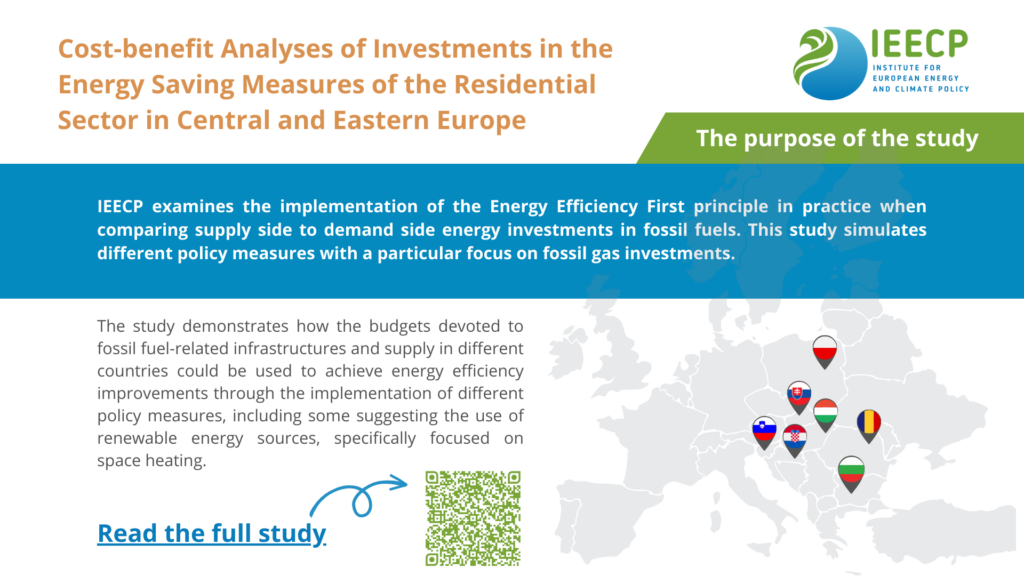The forthcoming Energy Efficiency Directive has set in Article 3 the implementation of the Energy Efficiency First principle, which is a cornerstone in the current and future energy investment decisions.
The purpose of this study is to examine, through simulating different policy measures, the implementation of the Energy Efficiency First principle in practice when comparing supply side to demand side energy investments in fossil fuels, with a particular focus on fossil gas investments.
Commissioned by Greenpeace Central and Eastern Europe, the study demonstrates how the budgets devoted to fossil fuel-related infrastructures and supply in different countries (Bulgaria, Croatia, Hungary, Poland, Romania, Slovakia and Slovenia) could be utilised to achieve energy efficiency improvements through the implementation of different policy measures, including ones suggesting the utilisation of renewable energy sources, specifically focused on space heating. Therefore, four scenarios on demand side investments were delineated, in addition to the baseline scenario where an improvement of existing fossil fuel boilers was considered.
The first scenario was the energy retrofitting of the building envelope, the second the installation of heat pumps, the third the combination of the first two scenarios (energy retrofit and heat pumps), whereas the final was the combination of the first two plus the implementation of solar photovoltaics as to obtain zero-energy buildings. These scenarios were thereafter confronted and compared by performing a purely economic and a social cost-benefit analysis (through Net Present Value, Internal Rate of Return and Benefit to Cost indicators). This was done to ensure that all the multiple benefits related to the practical application of the Energy Efficiency Frist principle were considered. The decision criterion for allocating public funding was that an investment that might result unfavourable by only considering strictly economic indicators at a national level, on the other hand would result highly beneficial to society when considering multiple benefits non-related to a strictly economic perspective.
From an economic perspective the support in fossil fuel infrastructure (Scenario 0 in the Figure below) has the lowest cost-benefit ratio in all CEE countries. This means that among all scenarios investigated, gas investments bring the lowest benefit and greatest losses to the national economy. In contrast, the zero-energy buildings are everywhere the most cost-efficient option (Scenario 4).
When incorporating the multiple benefits of energy efficiency in the debate and carrying out a social cost-benefit analysis, the energy efficiency upgrades together with all heating decarbonisation measures are positive in terms of cost-benefit ratio, where the most efficient one is the zero-energy buildings. The substitution of fossil-fuel boilers with more efficient ones and the general support in fossil fuel infrastructures performs also negatively from a social cost benefit analysis in all countries.
In brief, the most socially and economically profitable solutions are the renovation of the building stock while concurrently promoting the installation of both heat pumps and photovoltaics. Renovation is in all cases considered more economically viable than public spending on fossil fuel networks. Therefore, grants for the renovation of the building envelope and zero-consumption buildings should be at the heart of the revised National Energy and Climate Plans’ policies, coupled with the evaluation of alternative means for financing the required investments. Based on the decision criterion of the economic and socio-economic performance, public spending should not be targeted at fossil fuel boilers further but rather shift towards energy efficiency upgrades and zero-energy buildings in most countries.
Based on IEECP research, Greenpeace developed a briefing for policymakers: “Which energy investments can address energy poverty and climate change at the same time?”.
And to grasp the key results into a visual format, IEECP prepared an infographic, available below for download.


